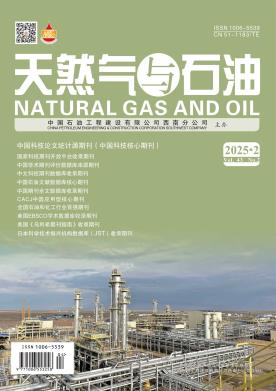油气管道失效数据分析及失效原因研究
Research on failure data analysis and causes of failure of oil and gas pipeline
浏览(29041) 下载(108)
- 引用格式:
-
杨玉锋,李杨,张强,汪澍,张希祥.油气管道失效数据分析及失效原因研究[J].天然气与石油,2022,40(3):28-34.doi:10.3969/j.issn.1006-5539.2022.03.005
YANG Yufeng , LI Yang, ZHANG Qiang, WANG Shu, ZHANG Xixiang.Research on failure data analysis and causes of failure of oil and gas pipeline[J].Natural Gas and Oil,2022,40(3):28-34.doi:10.3969/j.issn.1006-5539.2022.03.005
- DOI:
- 10.3969/j.issn.1006-5539.2022.03.005
- 作者:
- 杨玉锋1,2 李杨3 张强1 汪澍2 张希祥1
YANG Yufeng 1,2, LI Yang3, ZHANG Qiang1, WANG Shu2, ZHANG Xixiang1
- 作者单位:
- 1. 国家管网集团科学技术研究总院分公司, 河北 廊坊 065000; 2. 北京科技大学土木与资源学院, 北京 100083; 3. 中国石油管道工程有限公司设备租赁分公司, 河北 廊坊 065000
1. General Institute of Science and Technology of National Petroleum and Natural Gas Pipeline Network Group Co., Ltd, Langfang, Hebei, 065000, China; 2. School of Civil and Resources Engineering, University of Science and Technology Beijing, Beijing, 100083, China; 3. China Petroleum Pipeline Bureau Equipment Management Company, Langfang, Hebei, 065000, China
- 关键词:
- 失效数据;事故分级;事故统计;失效原因;危害程度
Failure data; Incident classification; Incident statistics; Cause of failure; Hazard level
- 摘要:
- 为了掌握油气管道失效原因,以美国1995—2014年油气管道失效数据为基础,开展了油气管道失效数据统计分析与研究。阐述了美国油气管道失效事故数据上报准则与分级要求,从事故数量及发展趋势、事故后果影响、失效原因等方面开展了统计分析,结果显示自2002年美国提高管道管理要求以来,特大事故数量明显呈逐年下降趋势,上报事故和重大事故数量基本保持平稳。基于油气管道失效数据研究了7类失效原因导致管道失效事故比例关系情况,从发生危害可能性和危害后果严重程度对7类失效原因进行评价,结果显示所有上报事故和重大事故主要失效原因为材料/焊接、腐蚀和开挖损坏,特大事故的主要失效原因是开挖损坏、其他不明原因和误操作。最后,就发展中国管道事故管理和数据统计分析提出建议。
In order to understand the causes and distribution of oil and gas pipeline failure, an analysis and research of oil and gas pipeline failure data was carried out based on the failure data in the 20 years from 1995 to 2014 in the United States PHMSA (Pipeline and Hazardous Materials Safety Administration) pipeline failure database. The research studies the reporting criteria and classification requirements of the United States pipeline failure incident data, analyses the number and developing trend of incidents, consequences and causes. The analysis results show that the number of major incidents in the United States has decreased significantly year by year since 2002 when the authority introduced more stringent pipeline management requirements. Meanwhile the number of reported incidents and serious incidents has basically remained stable. The causes of failure of oil and gas pipelines were studied, and the proportion of incidents caused by seven risk factors was studied. The hazard occurrence probability and severity of hazard consequences were evaluated. The results show that the main causes of failure of all reported incidents and serious incidents were material/welding, corrosion and excavation damage, and the main causes of failure of major incidents were excavation damage, other unknown causes and maloperation. Finally, some suggestions on the development of pipeline incident management and statistical analysis in China are put forward.



